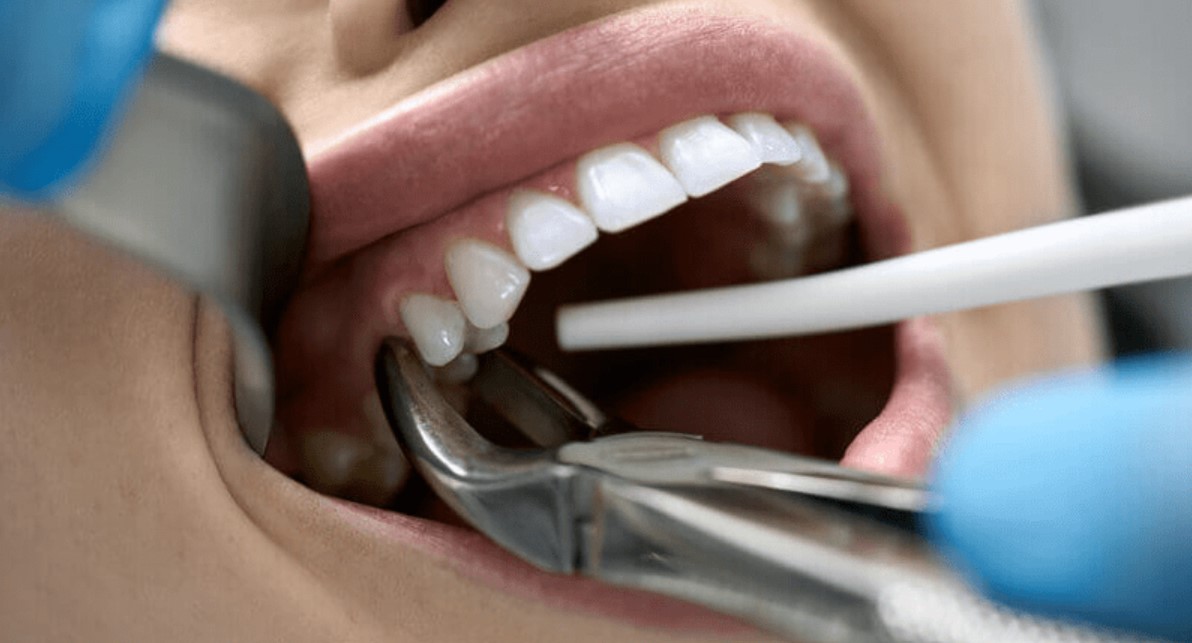There are several reasons why a dentist will remove a tooth, including decay or infection, crowding or improper alignment of teeth, gum disease, preparation for orthodontic treatment, among others. In some cases, a tooth extraction is performed as a preventative measure to avoid potential future problems.
So when the moment comes to have a tooth extracted, what’s involved? What are the risks? And what can we do to minimise those risks?
This is what you can expect from a tooth extraction procedure
During a tooth extraction, you can expect the following:
- Anaesthesia: To numb the area and minimise discomfort, the dentist will either use local anaesthesia or sedation.
- Loosening of the tooth: The dentist will use tools to gently loosen the tooth from its socket.
- Removal of the tooth: The tooth is removed using forceps.
- Stitching: If the tooth is removed surgically, the dentist may close the wound with stitches.
After the extraction, the dentist will provide pain management instructions, which may include over-the-counter pain medication or a prescription.
What are the risks of tooth extractions?
Tooth extractions are generally considered safe when performed by a qualified dentist or oral surgeon. There are several risk factors associated with tooth extraction to be aware of however, including:
- Bleeding: Mild to moderate bleeding is normal after a tooth extraction, but excessive bleeding can occur if the blood clot is dislodged.
- Pain and swelling: Pain and swelling are common after tooth extraction and can be managed with over-the-counter pain medication and cold compresses.
- Dry socket: A dry socket occurs when the blood clot that normally forms after a tooth extraction is dislodged, exposing the bone and nerves. This can cause severe pain and slow healing.
- Infection: A tooth extraction site can become infected if bacteria enter the wound. Symptoms of infection include pain, swelling, redness, and fever.
If you have any worrying symptoms, contact your dentist or other health professional immediately.
After care
It will take several days to a week for the wound to heal completely, and it’s important to follow the dentist’s post-operative instructions to ensure a smooth recovery.
Some general guidelines include:
- Bite on a gauze pad for 30-45 minutes after the procedure to help control bleeding.
- Ice the outside of your cheek for the first 24 hours to reduce swelling.
- Avoid smoking and drinking through a straw for the first 72 hours, as this can dislodge the blood clot and slow healing.
- Rinse your mouth with salt water several times a day to help keep the extraction site clean and reduce the risk of infection.
- Avoid solid foods for a few days, then return to a soft diet as you heal.
- Take pain medication as prescribed, and use over-the-counter pain relief if needed.
- Avoid strenuous physical activity for the first 24-48 hours.
If you experience heavy bleeding, severe pain, or signs of infection such as a fever, contact your dentist right away.
At Simply Dental we recommend a balanced approach to well-being, including a healthy, varied diet, good daily hygiene practices, and regular dental checkups. To make a dental appointment in Wellington, contact Simply Dental.

